|
|

Examples
Here we show some selected examples that illustrate results user can obtain using WimPyDD.
Nuclear response functions
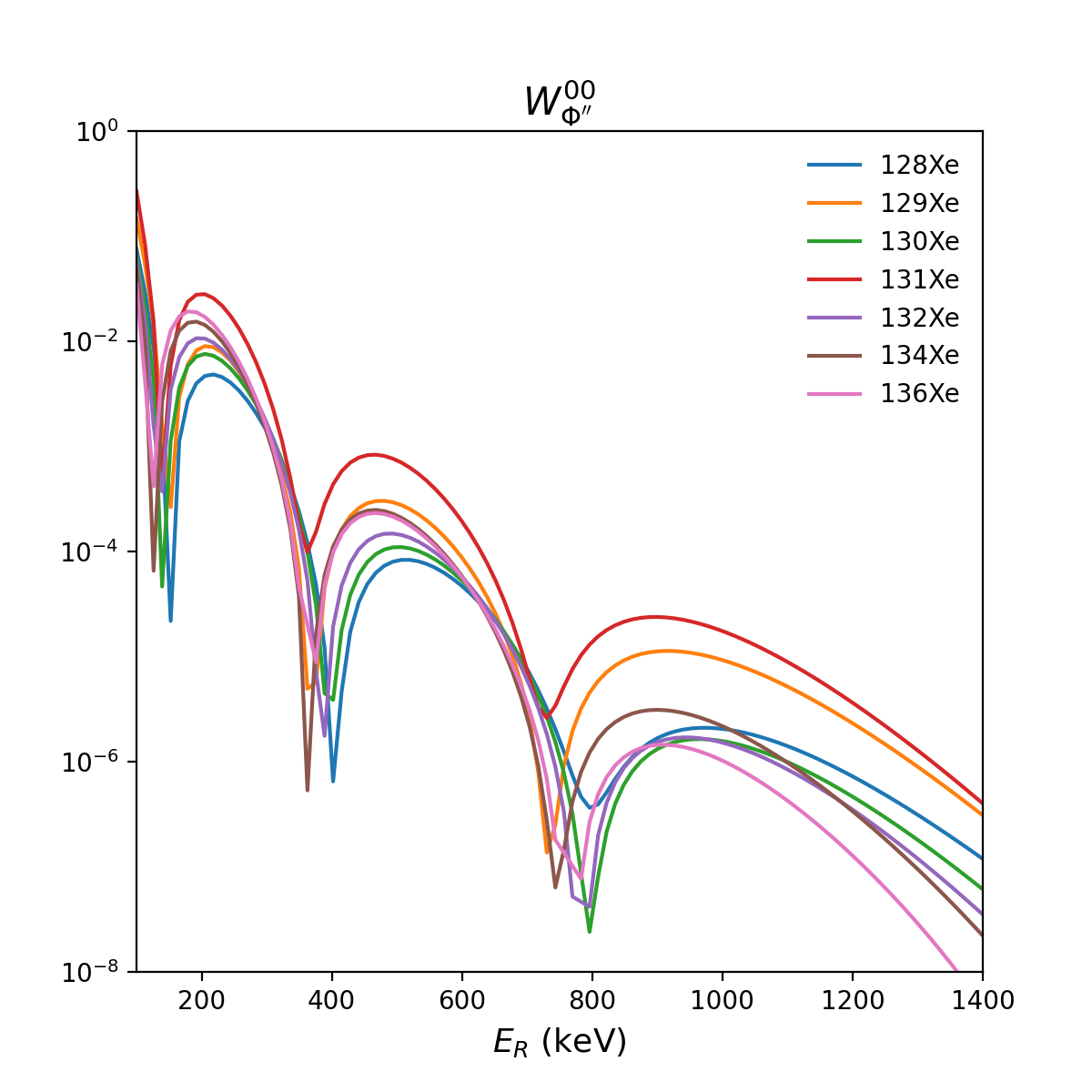
- Description
Nuclear response functions \(W^{00}_{\Phi^{\prime\prime}}\) for the
isotopes of xenon.
- Code
plot_w_functions.py
- Reference
The phenomenology of nuclear scattering for a WIMP of arbitrary spin
[arXiv:2102.09778]
Differential rate and integrated signal
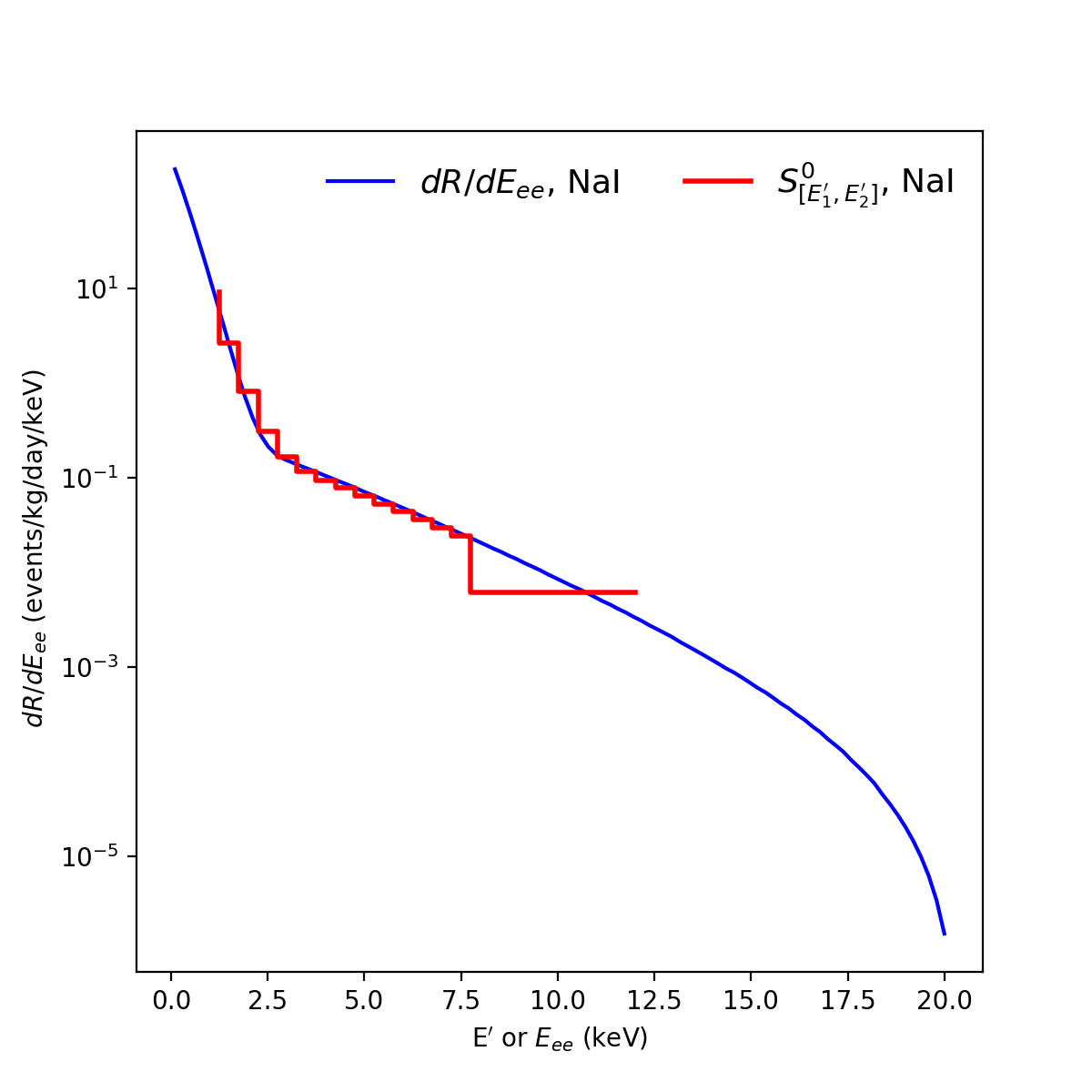
- Description
Differential rate \(dR/dE_R\) for NaI (no detector response) and binned rate in DAMA-LIBRA \(S^{(0)}_{[E_1^{\prime},E_2^{\prime}]}\) (including detector response).
- Code
plot_diff_rate_s0.py
- Reference
Similar plots for COSINE-100 experiments can be found in JCAP 06 (2019) 048
[arXiv:1904.00128]
Binned yearly modulation amplitudes
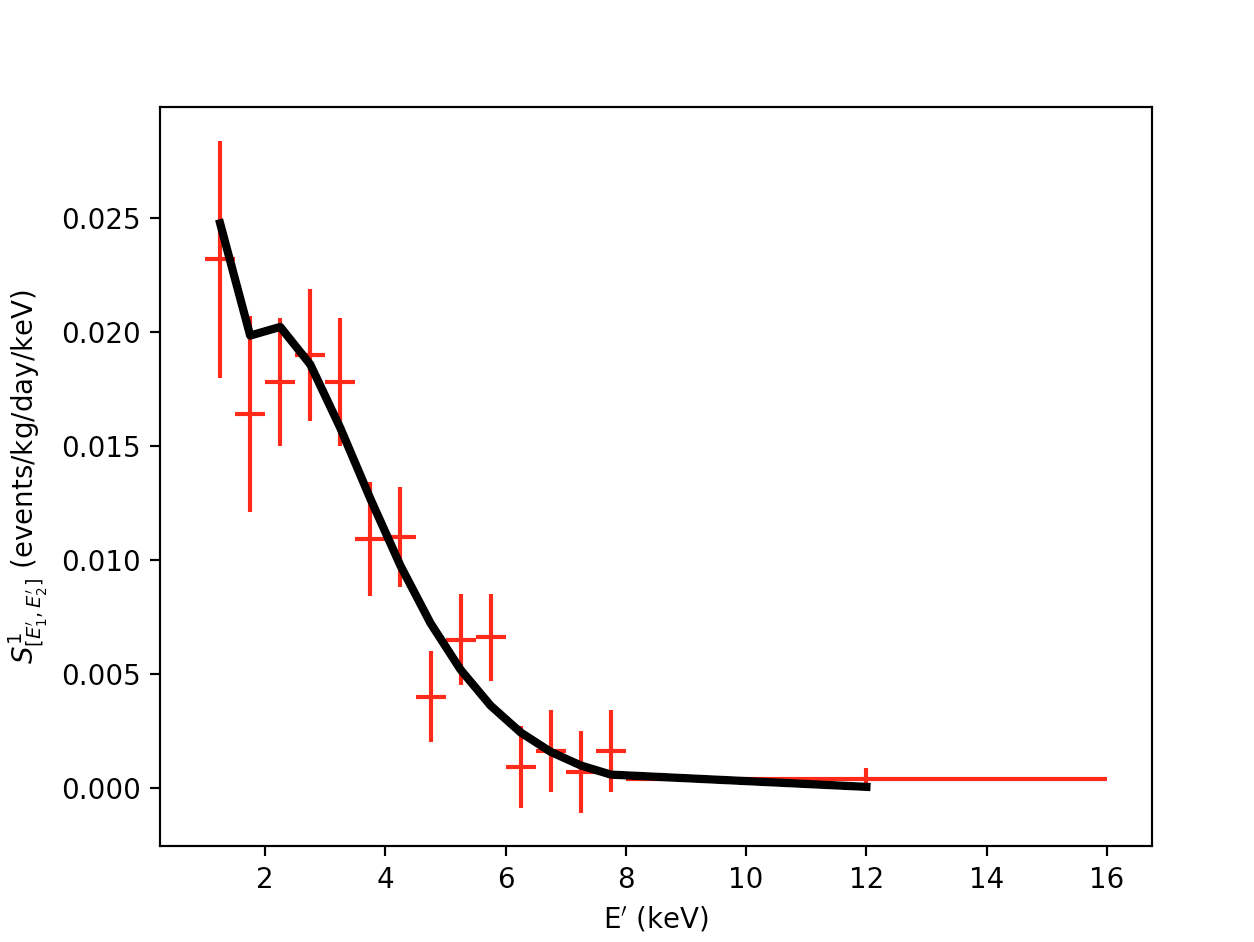
- Description
Binned yearly modulation amplitudes \(S^{(1)}_{[E_1^{\prime},E_2^{\prime}]}\) in DAMA-LIBRA (including detector response) for the effective Hamiltonian \({\cal H}=\sum_{\tau=0,1} c_9^{\tau}(m_\chi,\sigma_{ref},r) {\cal O}_{9}^{\tau} \) and the best-fit values of the parameters.
- Code
plot_modulation_amplitudes_c9.py
- Reference
DAMA/LIBRA-phase2 in WIMP effective models,JCAP 07 (2018) 016
[arXiv:1804.07528]
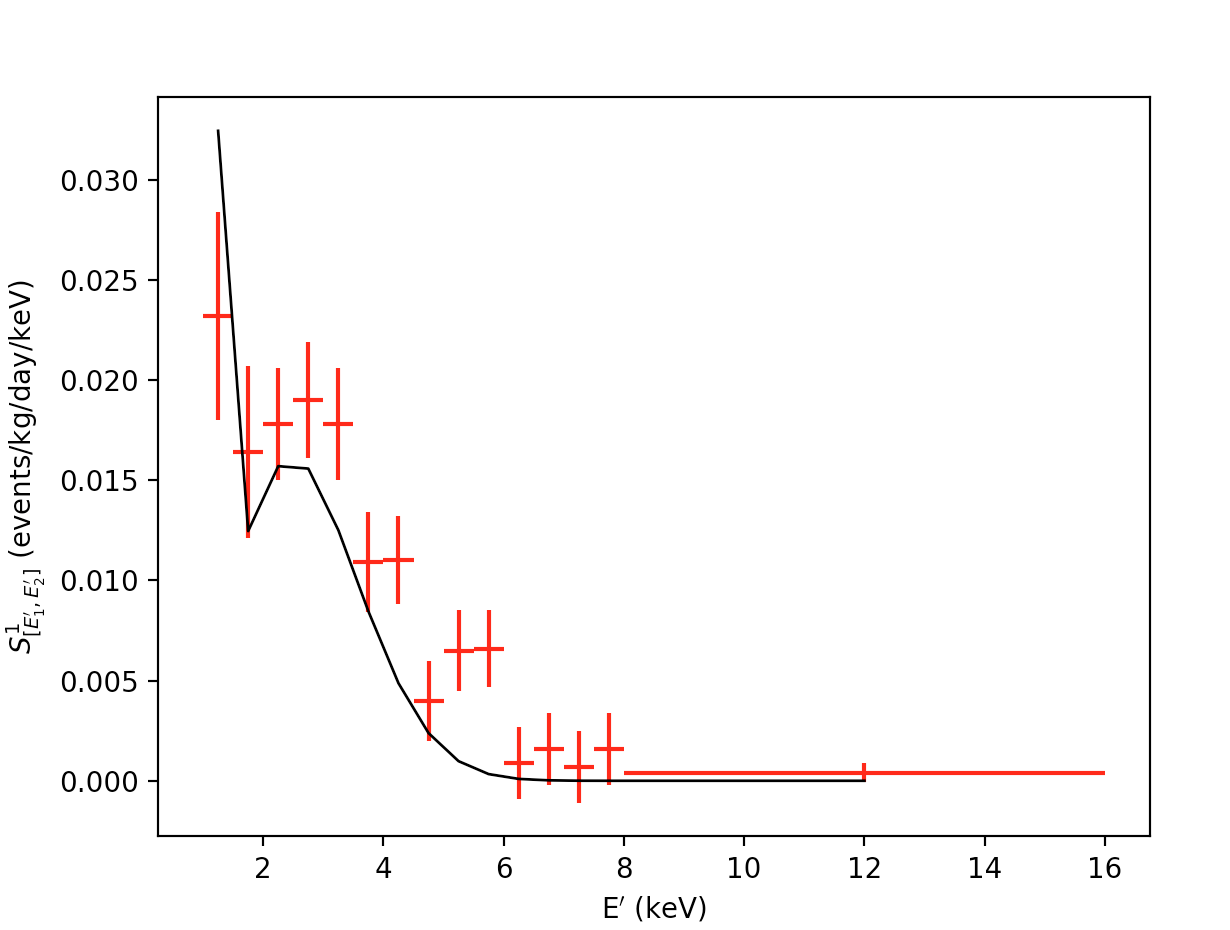
- Description
Binned yearly modulation amplitudes \(S^{(1)}_{[E_1^{\prime},E_2^{\prime}]}\) in DAMA-LIBRA (including detector response) for the effective Hamiltonian \({\cal H}=\sum_{\tau=0,1} \left[ c_4^{\tau} {\cal O}_{4}^{\tau}+c_5^{\tau} {\cal O}_{5}^{\tau}+c_6^{\tau} {\cal O}_{6}^{\tau} \right]\) and values of the parameters that minimize the tension with DAMA-LIBRA.
- Code
plot_modulation_amplitudes_c4_5_6.py
- Reference
Probing DAMA/LIBRA data in the full parameter space of WIMP effective models of inelastic scattering, Phys.Rev.D 99 (2019) 10, 103019
[arXiv:1902.09121]
XENON1T exclusion plots
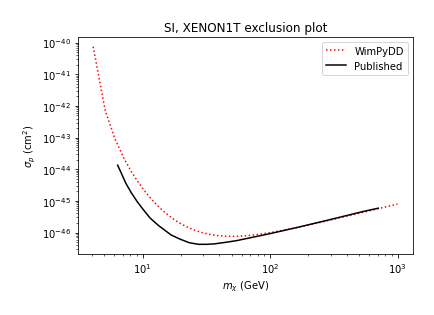
- Description
Estimation of the XENON1T exclusion (90% C.L.) plot for the effective spin-independent Hamiltonian \({\cal H}=\sum_{\tau=0,1} c_1^{\tau} {\cal O}_{1}^{\tau}\) in terms of the
WIMP-nucleon cross section \(\sigma_{\cal N}=c_{\cal N}^2 \frac{\mu_{\chi{\cal N}}^2}{\pi} \), with \(c_{\cal N}=c_1^p=c_1^n\), \(c_1^0=c_1^p+c_1^n\), \(c_1^1=c_1^p-c_1^n\) and \(\mu_{\chi{\cal N}}\) the WIMP-nucleon reduced mass.
- Code
plot_SI_xenon_1t_exclusion_plot.py
- Reference
Present and projected sensitivities of Dark Matter direct detection experiments to effective WIMP-nucleus couplings, Astropart.Phys. 109 (2019) 50-6 [arXiv:1805.06113]
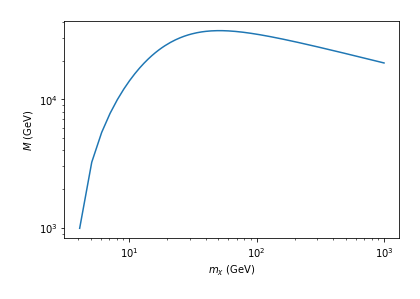
- Description
Estimation of the XENON1T exclusion plot (90% C.L.) for the effective spin-independent Hamiltonian \({\cal H}=\sum_{\tau=0,1} c_1^{\tau} {\cal O}_{1}^{\tau}\) in terms of the
effective scale \(M\), with \(c_1^p=c_1^n=\frac{1}{M^2}\) (experimental lower bond on \(M\))
- Code
plot_SI_xenon_1t_exclusion_plot_effective_scale.py
- Reference
Similar plots for different relativistic models can be found in, Astropart.Phys. 114 (2020) 80-91 [arXiv:1810.00607]
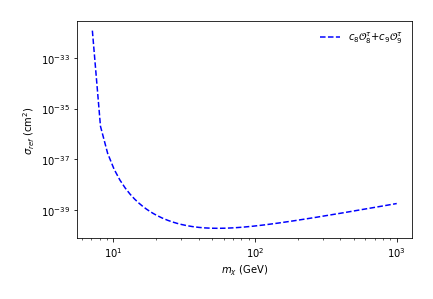
- Description
Estimation of the XENON1T exclusion plot (90% C.L.) for Anapole dark matter with Hamiltonian \({\cal H}=\sum_{\tau=0,1} c_8^{\tau} {\cal O}_{8}^{\tau} + c_9^{\tau} {\cal O}_{9}^{\tau}\) in terms of reference cross section \(\sigma_{ref}\).
- Code
plot_anapole_xenon_1t_exclusion.py
- Reference
Anapole Dark Matter after DAMA/LIBRA-phase2, JCAP 11 (2018) 040
[arXiv:1808.04112]
Inelastic scattering
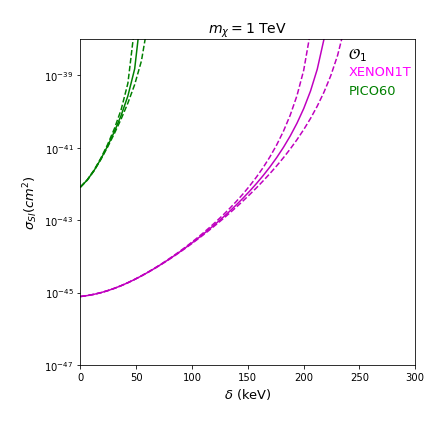
- Description
Constraints on WIMP-nucleon scattering (90% C.L.) for XENON1T and PICO60 experiments for spin-independent inelastic dark matter.
The color bands signify the uncertanities in the WIMP escape velocity.
- Code
plot_inelastic_scattering_exclusion.py
Meson poles
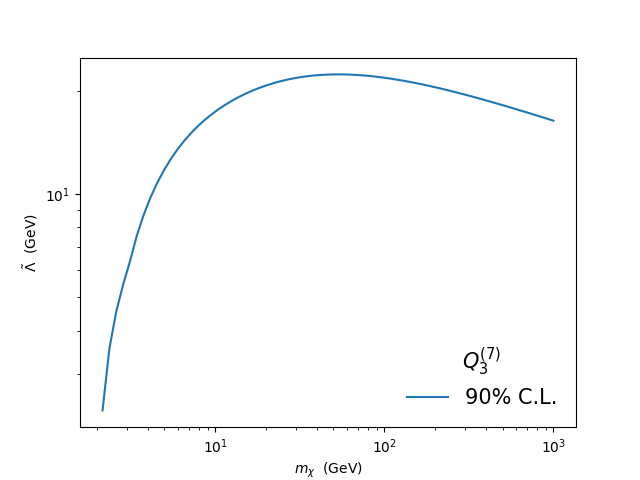
- Description
Lower bound on the effective scale \(\tilde\Lambda\) for the effective hamiltonian \(L_{\chi} = \frac{1}{\tilde\lambda^3}\frac{\alpha_s}{8\pi}\bar\chi\chi G^{a\mu\nu}\tilde G^a_{\mu\nu}\) including the effect of meson poles.
- Code
plot_meson_poles.py
- Reference
DirectDM: a tool for dark matter direct detection
[arXiv:1708.02678]
From quarks to nucleons in dark matter direct detection
[arXiv:1707.06998]
On the sensitivity of present direct detection experiments to WIMP–quark and WIMP–gluon effective interactions: A systematic assessment and new model–independent approaches
[arXiv:1810.00607]
Velocity distribution
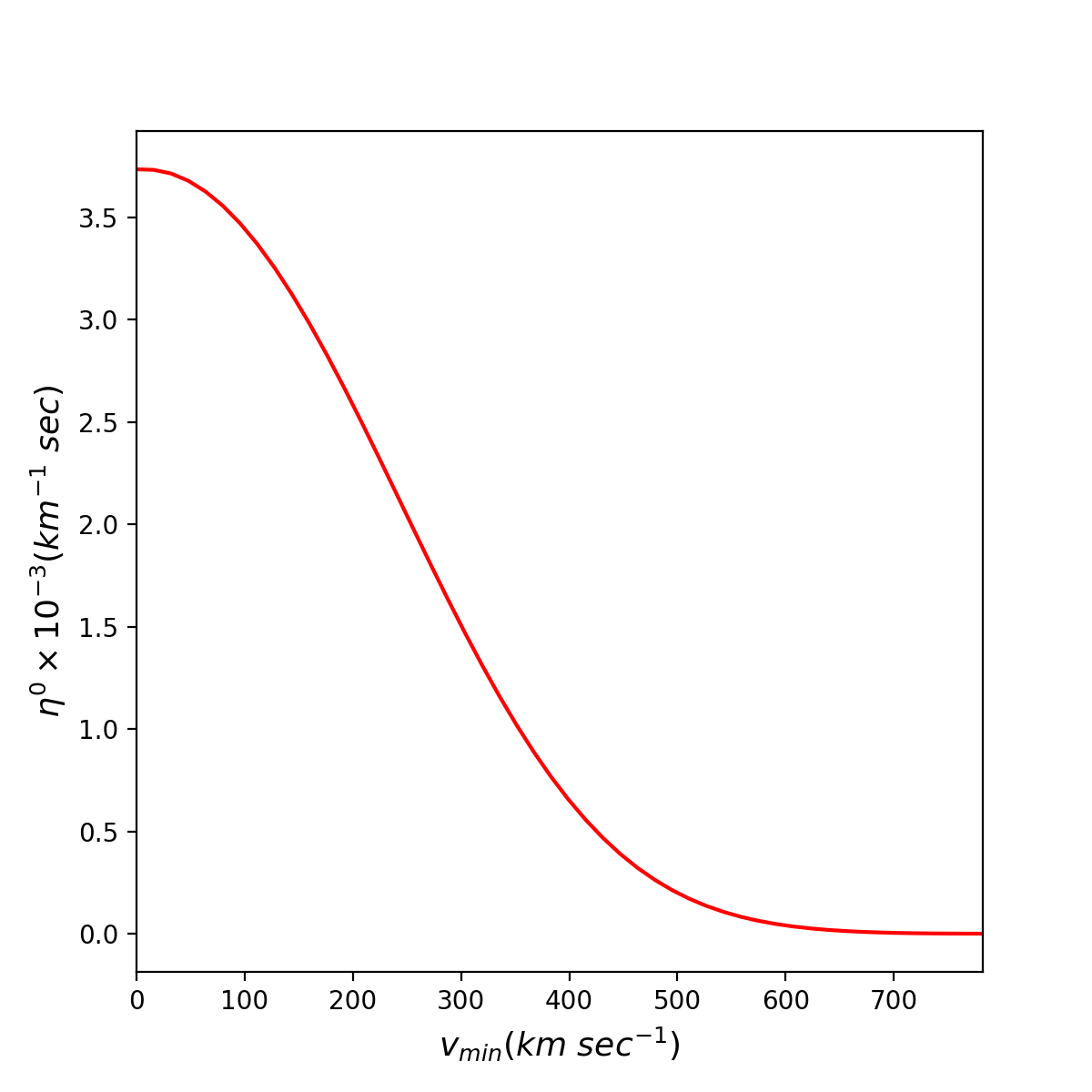
- Description
\(\eta^{(0)}\) is the time averaged part of the velocity integral \(\eta=\int_{v>v_{min}}f(v)/v~d^3v\), as a function of \(v_{min}\)
i.e. \(\eta(v_{min})=\eta^{(0)}(v_{min})+\eta^{(1)}(v_{min}){\rm cos}[\omega(t-t_0)]\).
- Code
plot_eta0_vmin.py
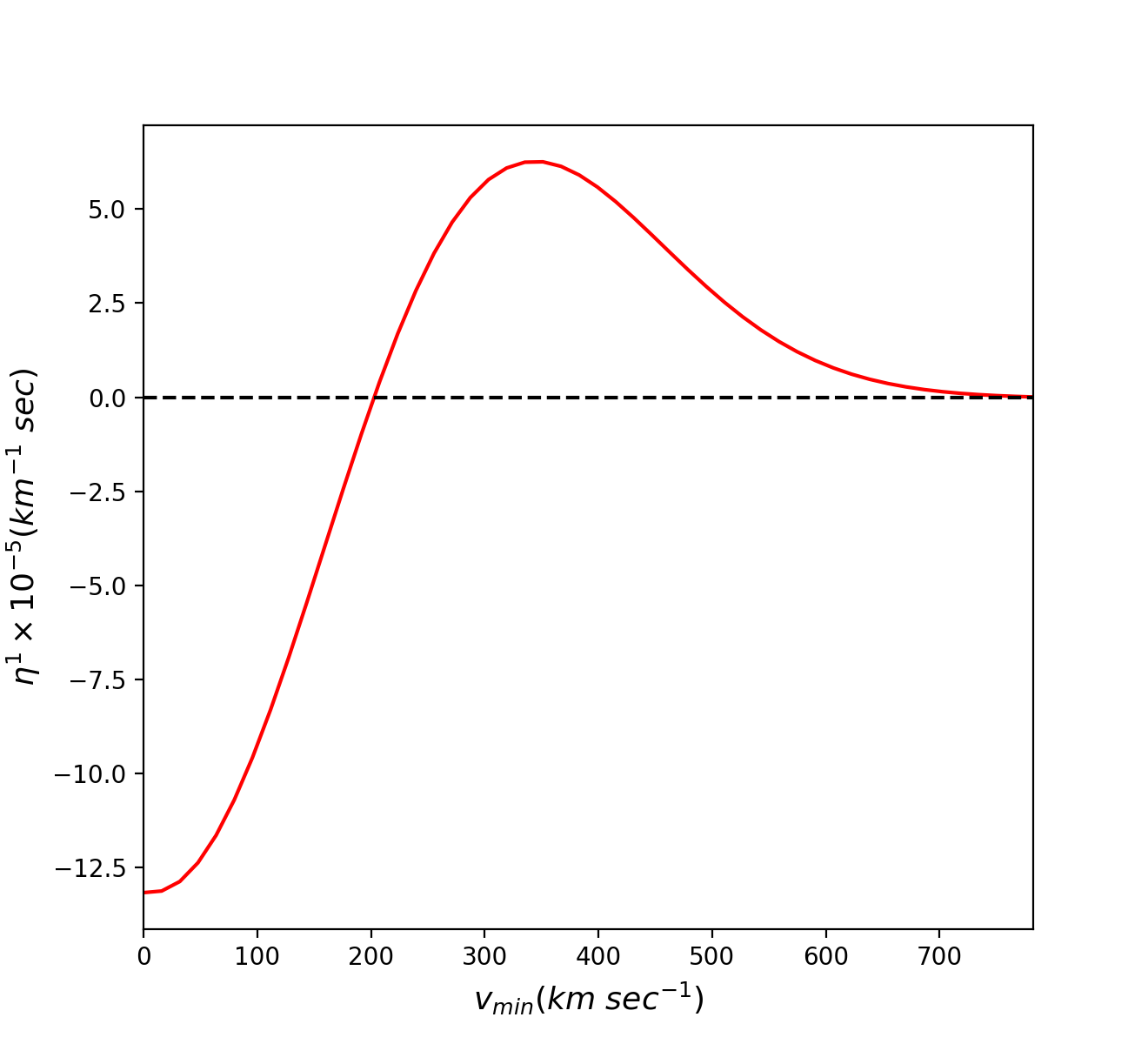
- Description
\(\eta^{(1)}\) is the modulated part of the velocity integral \(\eta=\int_{v>v_{min}}f(v)/v~d^3v\), as a function of \(v_{min}\)
i.e. \(\eta(v_{min})=\eta^{(0)}(v_{min})+\eta^{(1)}(v_{min}){\rm cos}[\omega(t-t_0)]\). Here \(\omega=2\pi\)/yr and \(t_0\) is the time
of maximal signal (used \(t_0=2\) June).
- Code
plot_eta1_vmin.py

- Description
Triaxial velocity distribution defined in N.W. Evans, C.M. Carollo and P.T. de Zeeuw, Mon. Not. R. Astron. Soc. 318, 1131 (2000) given by a Maxwellian with velocity dispersions:
\(v^2_r=\frac{v^2_0p^{-4}}{(2+\delta)(1+q^{-2}-p^{-2})}\)
\(v^2_{\phi}=\frac{v^2_0(2q^{-2}-p^{-2}}{2(1+q^{-2}-p^{-2})}\)
\(v^2_{\theta}=\frac{v^2_0(2-p^{-2})}{2(1+q^{-2}-p^{-2})}\)
in the radial directions of the Galactic reference frame. The quantity delta is a free parameter that quantifies the degree of anisotropy of the velocity dispersion tensor.
The parameters p and q parameterize the gravitational triaxial potential.
- Code
plot_triaxial_model.py
- Reference
Triaxial haloes and particle dark matter detection [arXiv:astro-ph/0008156]
Effect of the galactic halo modeling on the DAMA-NaI annual modulation result: An extended analysis of the data for weakly interacting massive particles with a purely spin-independent coupling
[arXiv:hep-ph/0203242]
WIMP response function
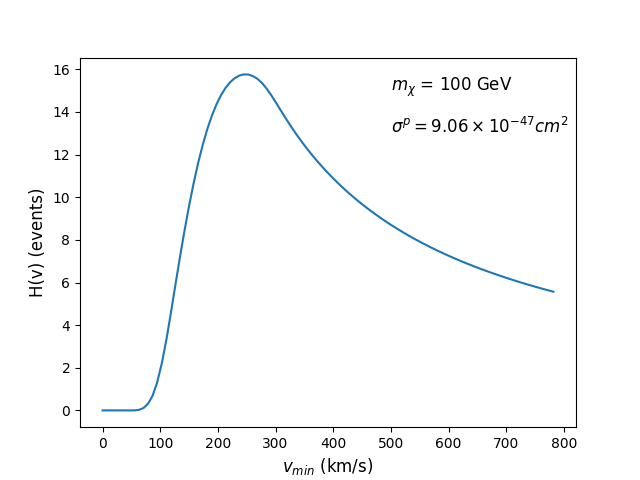
- Description
H(v) response function for halo-independent calculations(eq.(23) of reference below).
When the expected event rate is written as \(R=\int H(v)~f(v)~dv\), H(v) denotes the number of events per streams.
- Code
plot_h_v.py
- Reference
WimPyDD: an object-oriented Python code for the calculation of WIMP direct detection signals [arXiv:2106.06207]
Matrices
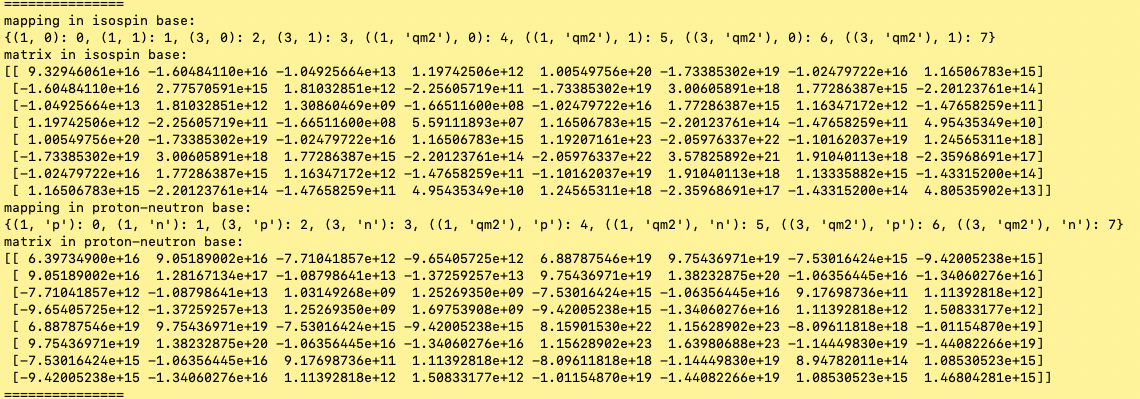
- Description
Use the routine wimp_dd_matrix to calculate the matrix for the calculation of the DD expected rate for given experimental set-up, effective hamiltonian, WIMP mass, velocity distribution.
The output of wimp_dd_matrix is always in isospin base.
The mapping between the indices of the matrix and the couplings is provided by the dictionary returned by the routine get_mapping.
The matrix can be rotated to the proton-neutron base using the rotation matrix returned by the routine rotation_from_isospin_to_pn.
- Code
print_matrix.py
- Reference
WimPyDD: an object-oriented Python code for the calculation of WIMP direct detection signals [arXiv:2106.06207]
Bracketing the direct detection exclusion plot for a WIMP of spin one half in non–relativistic effective theory
|














